
Ant infestations are a common problem in many homes across the United States. While these small insects might seem harmless at first glance, they can cause significant issues if not addressed promptly. This comprehensive guide will help you understand ant infestations, identify problematic species, and learn effective pest control methods to eliminate these unwelcome guests from your home.
Table of Contents
Understanding Ant Infestations in the United States
Ant infestations can be particularly troublesome in the United States, where diverse climates and environments provide ideal conditions for various ant species to thrive. Understanding why ants become pests and recognizing the signs of an infestation are crucial first steps in addressing the problem.
Why Ants Become Pests in Homes
Ants become pests in homes for several reasons. Primarily, they are in search of food, water, and shelter. Human homes offer an abundance of these resources, making them attractive targets for ants. Some common reasons include:
- Food Availability: Crumbs, spills, and improperly stored food can attract ants.
- Water Sources: Leaky faucets, pet water bowls, and other water sources are magnets for ants.
- Shelter: Ants seek shelter to build their colonies, often finding nooks and crannies in walls, under floors, or in insulation ideal for their needs.
Common Signs of an Ant Infestation
Identifying an ant infestation early can prevent a small problem from becoming a major issue. Common signs of an ant infestation include:
- Visible Ant Trails: Seeing lines of ants moving to and from food sources.
- Ant Nests: Discovering nests in your garden, walls, or inside the home.
- Sawdust Piles: Noticing small piles of sawdust, which can indicate carpenter ants.
- Damaged Food: Finding food containers that have been chewed through by ants.
- Increased Ant Activity: Observing a sudden surge in the number of ants around your home.
Most Problematic Ant Species in the United States
Several ant species are particularly problematic in the United States. Each species has unique behaviors and challenges that require different control methods.
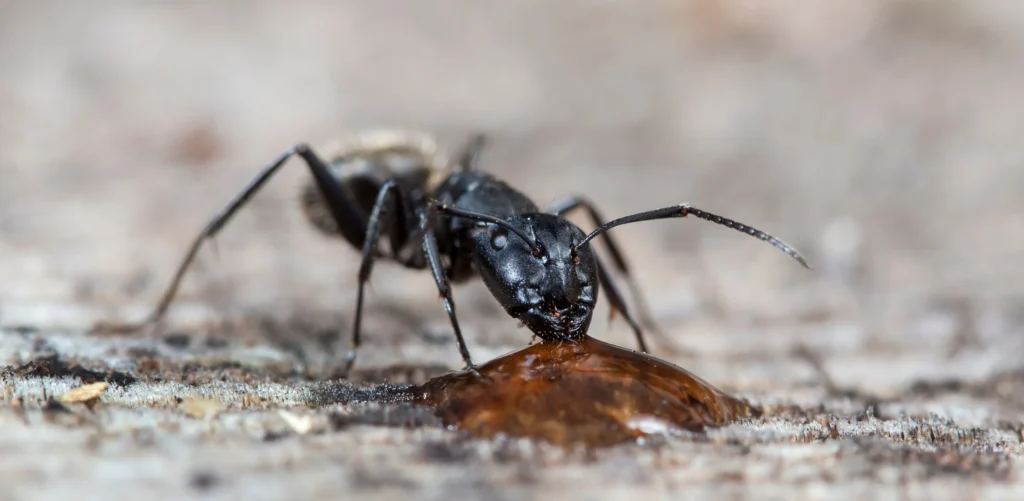
Carpenter Ants
Identification and Behavior
Carpenter ants are large ants, typically ranging from 1/4 to 1/2 inch in length. They are usually black but can also be red or a combination of colors. Unlike termites, carpenter ants do not eat wood; instead, they excavate it to create their nests, which can cause significant structural damage over time.
Why They Are a Problem
Carpenter ants are a problem because of their nesting habits. They hollow out wood to create their colonies, which can weaken the structural integrity of homes. If left untreated, carpenter ant infestations can lead to costly repairs.
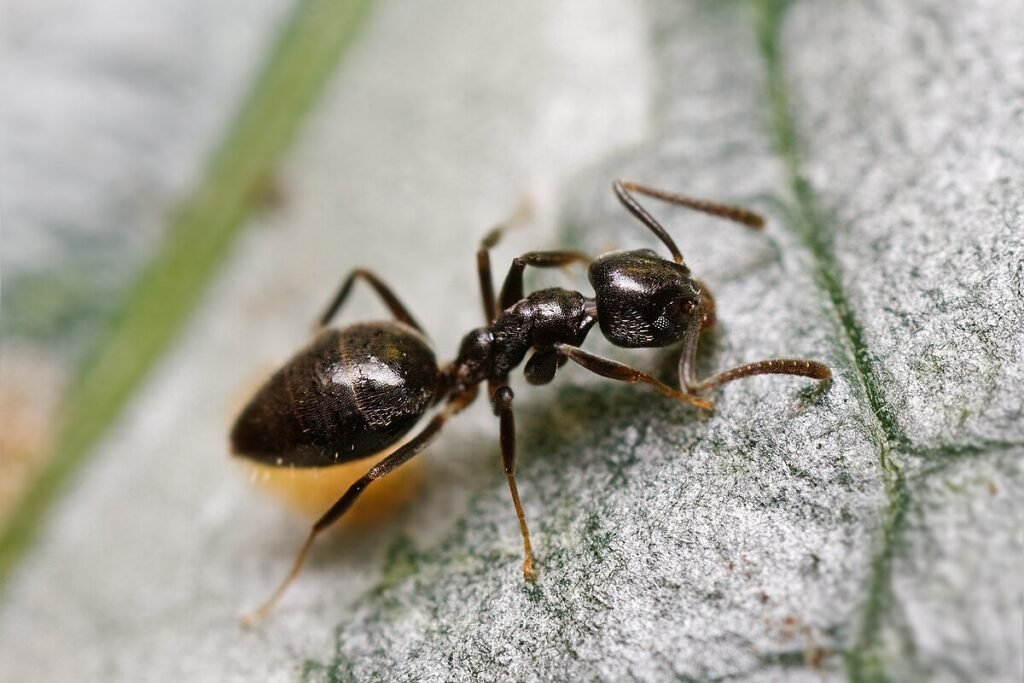
Odorous House Ants
Identification and Behavior
Odorous house ants are small, about 1/8 inch long, and dark brown to black. They emit a strong, rotten coconut-like odor when crushed, which is how they get their name. These ants are known for creating extensive trails between their nests and food sources.
Why They Are a Problem
Odorous house ants are a nuisance primarily because of their persistence and large colony sizes. They can contaminate food and are difficult to eliminate once they establish a presence in a home.
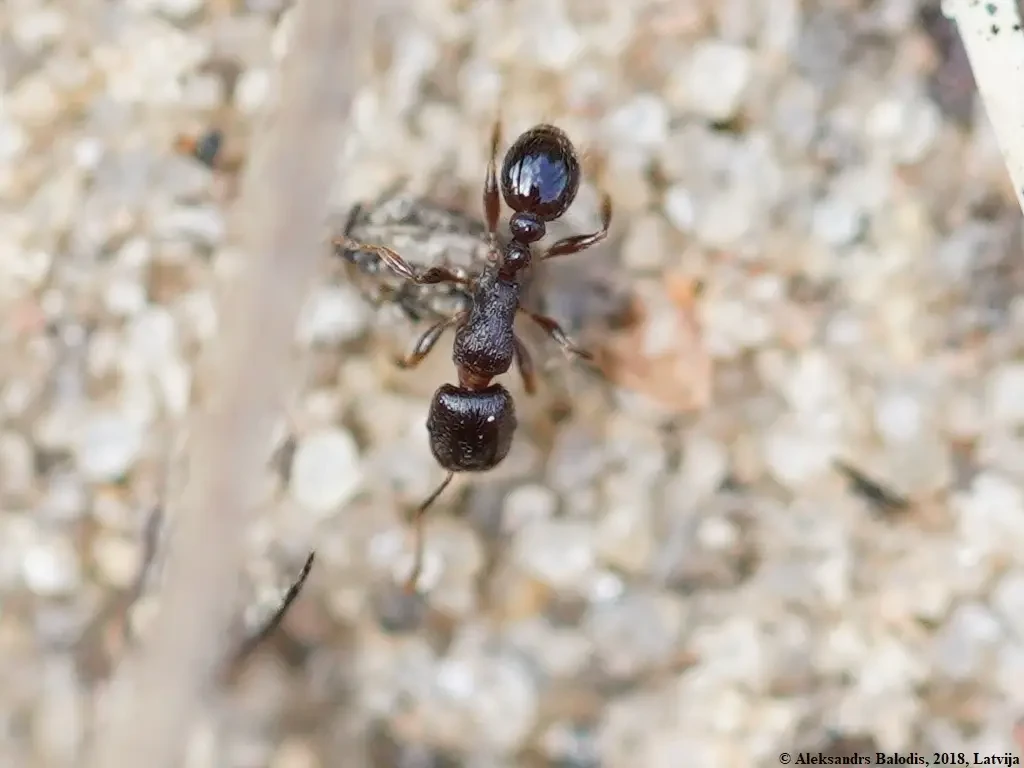
Pavement Ants
Identification and Behavior
Pavement ants are about 1/8 inch long and brown to black in color. They are commonly found nesting in cracks in pavement, under stones, and along foundations. They forage in trails and are known for invading homes in search of food.
Why They Are a Problem
Pavement ants can be a significant nuisance due to their large colonies and aggressive foraging behavior. They can invade homes in large numbers and contaminate food supplies.

Argentine Ants
Identification and Behavior
Argentine ants are light to dark brown and about 1/8 inch long. They are highly adaptable and can form massive colonies with multiple queens. These ants are known for their strong foraging trails and ability to outcompete other ant species.
Why They Are a Problem
Argentine ants are problematic due to their large colonies and aggressive behavior. They can quickly dominate an area, making them difficult to control. They also pose a risk of contaminating food and spreading bacteria.

Fire Ants
Identification and Behavior
Fire ants are reddish-brown and range from 1/8 to 1/4 inch in length. They are known for their painful stings, which can cause severe allergic reactions in some individuals. Fire ants build large, mound-like nests in open areas.
Why They Are a Problem
Fire ants are particularly dangerous because of their aggressive nature and painful stings. They can pose a serious health risk to humans and animals, especially in areas where their nests are disturbed.
How Pest Control Experts Eliminate Ant Infestations
Professional pest control experts use a variety of methods to eliminate ant infestations. Their approach typically involves a combination of inspection, identification, treatment, and prevention.
Inspection and Identification
The first step in eliminating an ant infestation is a thorough inspection and identification. Pest control experts will:
- Inspect the Property: Look for signs of ant activity, such as trails, nests, and damaged food.
- Identify the Species: Determine the species of ant to tailor the treatment approach.
- Assess the Extent: Evaluate the extent of the infestation to develop an effective treatment plan.
Treatment Methods
Once the inspection and identification are complete, pest control experts will implement treatment methods tailored to the specific ant species and infestation severity.
Chemical Treatments
Chemical treatments are often used to quickly and effectively eliminate ants. These treatments may include:
- Insecticidal Sprays: Applied directly to ant trails, nests, and entry points to kill ants on contact.
- Baits: Poisonous baits that ants carry back to their nests, effectively eliminating the colony from within.
- Dusts: Insecticidal dusts applied in wall voids and other hard-to-reach areas to kill hidden ants.
Non-Chemical Methods
Non-chemical methods are also used, especially in sensitive environments. These may include:
- Physical Barriers: Sealing cracks and gaps to prevent ants from entering the home.
- Natural Repellents: Using natural substances like diatomaceous earth or essential oils to deter ants.
- Environmental Modifications: Reducing moisture and food sources to make the environment less attractive to ants.
Prevention Tips from Experts
Preventing future infestations is a key part of effective ant control. Pest control experts recommend the following tips:
- Keep Food Sealed: Store food in airtight containers to prevent attracting ants.
- Clean Regularly: Regularly clean countertops, floors, and other surfaces to remove food particles and spills.
- Fix Leaks: Repair any leaks to eliminate water sources that ants might be attracted to.
- Seal Entry Points: Seal cracks, gaps, and other entry points to prevent ants from entering your home.
- Maintain the Yard: Keep the yard free of debris, and trim back vegetation that could provide shelter for ants.
Other common pests in the United States
14 July, 2024
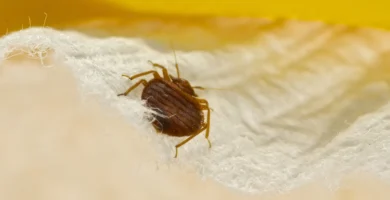
Pest Control for Bed Bugs
16 July, 2024
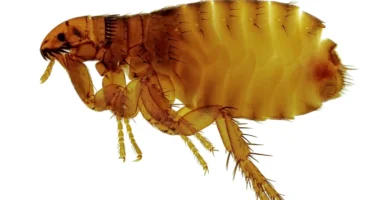
Pest control for fleas
16 July, 2024

Pest Control for Mice
16 July, 2024

Pest Control for Roaches
18 July, 2024
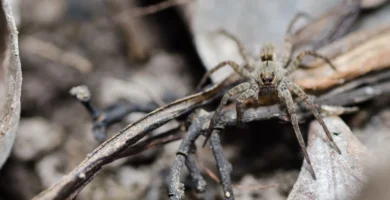
Pest Control for Spiders
16 July, 2024

Pest Control for Termites
17 July, 2024
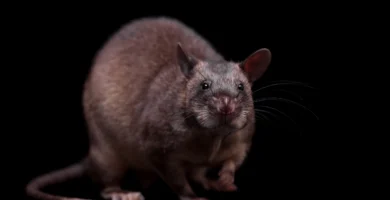
Pest Control for Rats
Frequently Asked Questions About Pest Control for Ants
Can pest control get rid of ants?
Yes, professional pest control services can effectively eliminate ants. Pest control experts utilize a comprehensive approach that includes inspection, identification of ant species, and targeted treatments. They assess the specific type of ant problem, locate nests, and apply appropriate solutions to eradicate the colonies. Additionally, they provide guidance on preventive measures to avoid future infestations, ensuring long-term protection for your home.
How do I get rid of ants permanently?
To achieve permanent ant control, it’s crucial to address the underlying causes of the infestation. Start by eliminating food and water sources that attract ants, such as crumbs, spills, and standing water. Seal any cracks or entry points in your home to prevent ants from entering. Regular cleaning and maintenance are essential to discourage ants from returning. For long-lasting results, consider hiring professional pest control services, which offer customized strategies and treatments tailored to your specific situation.
What is the number 1 way to get rid of ants?
The most effective method to eliminate ants is using baiting systems. Ant baits work by attracting ants with a food-based lure mixed with a slow-acting poison. The ants carry the bait back to their colony, where it is shared with other ants, including the queen. This approach targets the entire colony, leading to its eradication. Baiting is preferred because it addresses the root of the problem and provides a more comprehensive solution compared to surface sprays.
How much is pest control for ants?
The cost of ant pest control can vary based on several factors, including the severity of the infestation, the size of your property, and the treatment methods employed. On average, professional ant control services range from $100 to $500. It’s advisable to obtain quotes from local pest control companies to get an accurate estimate tailored to your specific needs and circumstances.
How often should pest control be done for ants?
The frequency of pest control treatments for ants depends on the level of infestation and the unique conditions of your home. Generally, regular quarterly treatments can help prevent new infestations. However, severe infestations may require monthly treatments until the problem is resolved. Continuous monitoring and maintenance are essential to ensure long-term control and prevent ants from returning.
Are ant control treatments safe for pets and children?
Most professional pest control treatments are safe for pets and children when applied according to the manufacturer’s instructions. It’s important to inform your pest control provider about any pets or children in your home. This allows them to take necessary precautions and, if needed, use pet-friendly or child-safe products. Always follow the guidelines provided by the pest control company to ensure the safety of your family and pets.
What attracts ants to my home?
Ants are primarily attracted to homes in search of food, water, and shelter. Common attractants include food crumbs, spills, uncovered food items, pet food, and standing water. To prevent ant infestations, maintain a clean home by promptly cleaning up spills, storing food in airtight containers, and fixing leaks. Regularly inspect and seal potential entry points to deter ants from entering your home.
Can ants cause damage to my property?
Yes, certain ant species, such as carpenter ants, can cause significant damage to property. Carpenter ants excavate wood to create their nests, which can compromise the structural integrity of buildings. Although they do not consume wood, their nesting habits can lead to costly repairs if left unchecked. Early detection and intervention are crucial to prevent extensive damage.
What should I do if I see ants after treatment?
If you notice ants after treatment, contact your pest control provider for guidance. It’s common to see some ant activity shortly after treatment as the colony is being eradicated. However, if ant activity persists, it may indicate that additional treatments are necessary. Your pest control provider can assess the situation and recommend further actions to ensure complete elimination.
How long does it take for pest control to work on ants?
The time it takes for pest control to work on ants varies based on the treatment method and the infestation’s severity. Chemical treatments and baits can start showing results within a few days. However, it may take several weeks to fully eliminate an entire colony, especially if it is large or well-established. Follow-up treatments and preventive measures are often required to achieve long-term control and prevent future infestations.
In conclusion, understanding ant behavior, identifying the specific ant species, and implementing targeted pest control measures are crucial for effectively eliminating ant infestations. By following the guidance of pest control experts and taking preventive steps, homeowners can keep their properties ant-free and avoid the hassles and damages associated with these persistent pests.
For more information on pest control for other household pests, consult reputable sources such as the Centers for Disease Control and Prevention (CDC) and local pest control professionals.
